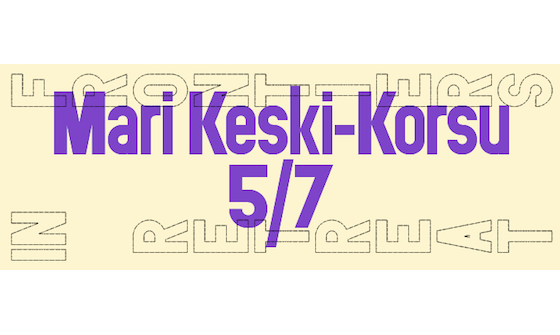13 Dec 2018
Events
Alpaca Oracle
Saturday, 5 July, 2014
Mari Keski-Korsu invites people to participate in her project Alpaca Oracle which will be realised in Alpaca Fuente Farm, Lohja on Saturday, 5 July, 2014. If you are interested in participating in the project, inquiries can be sent to info(at)hiap.fi by 25 June, 2014.
DESCRIPTION
Alpaca Oracle is a transdisciplinary inter-species communication project aiming to ask help and advice for humans from other animals, namely alpacas. The project is a collaboration between artist Mari Keski-Korsu, professional animal communicator Maiccu Kostiainen, and the Alpaca Fuente Farm.
Alpaca Oracle looks at the possibility of expanding human understanding on the present state and future prospects of life on earth by practicing the skills of inter-species communication. The project also explores how a herd functions and tries to reflect the findings in human population.
On Saturday, 5 July, the participants will be taken to Lohja to communicate with the herd. There the questions can be asked directly from the herd with the help of animal communicator. The findings are then documented and will be presented publicly.
Alpacas
The alpaca is an ancient animal originating from South American camelid. It is considered to be the first domestic animal before for example cow and sheep. It has stayed the same as it was 5000–7000 years ago. Due to alpacas fine fiber, it was called ‘the Gold of Andes’. Alpacas are a bit smaller than llamas and unlike llamas, they are not used to be beasts of burden. There are two breeds of alpacas: Suri and Huacaya. Alpaca Fuente’s herd are all Huacayas. The fiber of the alpacas are cut every spring, otherwise they would get too hot in the summer.
The first alpacas came to Finland in 2002 and now, there are about 1000 alpacas in the country
And no, alpacas don’t spit all the time. They do it when irritated but some alpacas don’t do that ever even though they can.
What is animal communication and why do it?
We all know about species-specific gestures and behaviour of different animals. But can this language reach out even further? This is what animal communicator Maiccu Kostiainen works with. She is a translator in between human and other animals. Basically anyone has an ability to do this if we just focus and concentrate as well as empty our minds from “too much traffic”. The aim of Alpaca Oracle is to experiment with this language and try to find new connections. As we know, human kind is facing several severe challenges we have caused ourselves: climate disruption (change), loss of diverse ecosystems, extinction of different species, pollution, overgrowth of human population and its consuming patterns (overuse of natural resources) etc. Other flora and fauna don’t cause such problems to themselves. If it wasn’t for humans, this planet would be probably doing just fine. Even though we try to find ways to solve the challenges mentioned, maybe it’s good to ask advice from those who already know and to do it in equal manner.
Roles and routines of an alpaca herd
Unlike human population, an alpaca herd is in balance with its’ environment. All the members of the herd have their specific roles and the herd has a daily routine. If the herd is a bit bigger, like for example about 20 individuals like in Alpaca Fuente, alpacas are more calm and relaxed because they know there are more eyes to spot the danger. There are always guardians whose role is to guard the herd and inform about danger. If a human approaches the herd, the guardians will check carefully if they are good people or not. The guardians are the lowest in the herd ranking.
There is on babysitter in the herd that takes care of the calfs when other adults have something more important to do. Usually the babysitter is a young female alpaca that hasn’t got any children of her own, yet. If there is a predator close by, all the calfs are collected to the centre of the herd and the adults surround them in a circle to protect them.
The lowest in the herd hierarchy are the old, weak or sick individuals. Usually, the alpacas try to hide if they have some physical issue.
Alpacas have a daily routine that all the herd members practice. They gaze, pasture, sleep at the same time. In order to make sure that there is enough food for the future, they move a lot and leave parts of the fields to grow.
About the artist:
Mari Keski-Korsu (b. 1976, living and working in Helsinki and Sulkava, Finland) explores how ecological and socio-economic changes are manifested in people’s everyday lives – how a macrocosm becomes a microcosm and vice-versa. Her works are of a political nature with a humorous twist. The starting point of her work is often a location, a place and the relationship of people with it. Keski-Korsu’s practice consists, for example, of interventions, documentary, performance, virtual worlds, photography, live visualizations, and installations as well as of combining of these mediums. Keski-Korsu is interested in relations in between art, activism, politics, and science, and she collaborates with diverse artist groups, researchers as well as organizes and curates different types of projects.


